China’s rise to become the most influential power on the African continent was long considered unstoppable. The People’s Republic invested and traded with the countries of Africa. But now, the African Union (AU) is rebelling against the People’s Republic – it has banned the donkey skin trade. Their export had recently increased sharply. As Fabian Peltsch writes, the skin of the hard-to-breed donkeys, which are of enormous value to local agriculture, is used to produce a coveted remedy in traditional Chinese medicine. The all-purpose product called Ejiao has been booming as China’s prosperity grows.
But this trade resulted in a dramatically reduced donkey population in Africa, and poorer farmers, in particular, no longer have enough of these resilient animals. It remains to be seen whether the AU’s continent-wide ban can help save the donkey population: After all, each state still has to incorporate it into national law. And the black market is flourishing. In any case, it is a textbook example of how a lack of sensitivity to local conditions can lead to problems.
Germany does not want to make the same mistake in its relations with Southeast Asia, so Chancellor Olaf Scholz welcomed Prime Minister Anwar Ibrahim, who had arrived from Malaysia despite the start of Ramadan. It is ASEAN Week in Berlin, as Michael Radunski analyzes. Scholz is meeting the heads of government of Malaysia, the Philippines, and Thailand this Wednesday. The topic is always identical: New market opportunities for German companies as part of the country’s de-risking efforts.
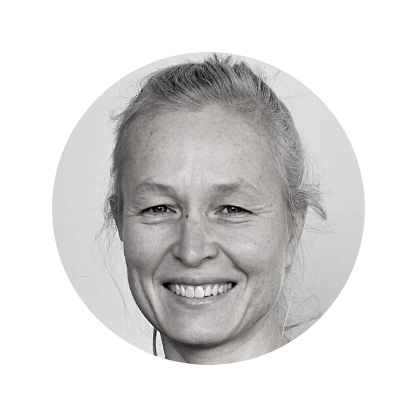
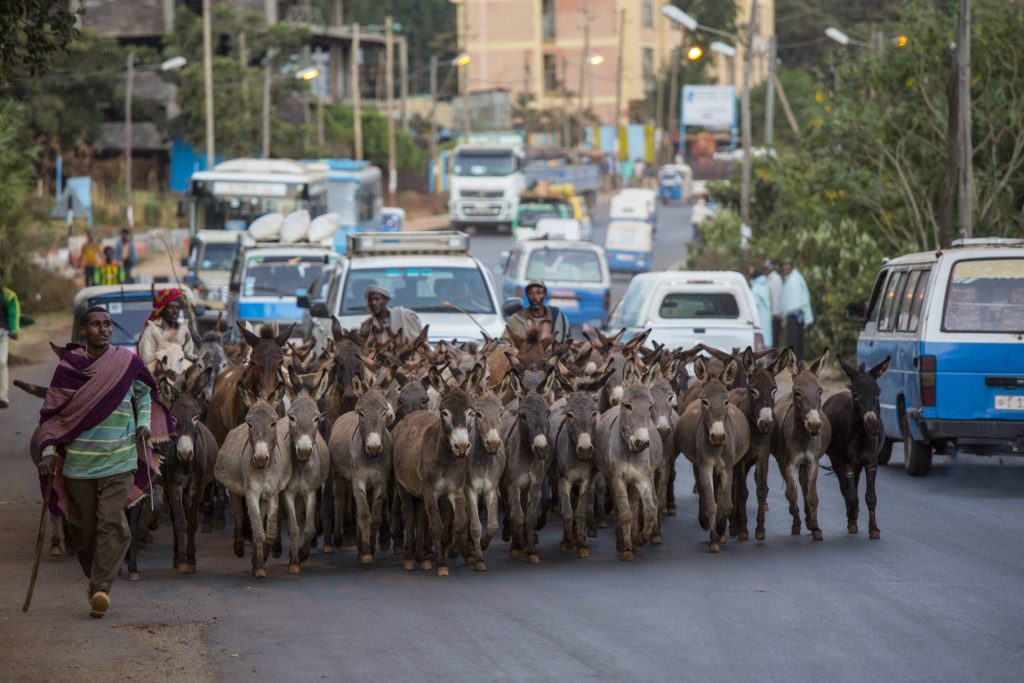
The donkey has become a kind of elephant in the room for Sino-African relations. These farm animals are mass slaughtered in Africa and then processed into ejiao 阿胶 in China, a popular universal remedy in Chinese medicine (TCM) believed to be effective against a variety of ailments such as respiratory and circulatory diseases, as well as signs of aging and pregnancy problems.
Given the wide range of applications, it is hard to prove the medicinal effect of this gelatin made mainly from the skin of this animal. However, as its use can be traced back to texts from the Han Dynasty (206 BC to 220 AD), it is considered a cultural heritage in China and is marketed by companies such as Dong’e Ejiao from Shandong as the medicine of empresses and emperors.
Since the 1950s, this “donkey glue” has been processed industrially in China. Around 15,288 tons of ejiao were produced in the People’s Republic in 2020 alone. This meant that four to six million donkeys had to be slaughtered. According to estimates by the non-profit organization Donkey Sanctuary, that is around 10 percent of the global donkey population.
As donkeys are difficult to breed and only give birth every few years, China has long relied on foreign sources to satisfy its hunger for ejiao. For years, these have primarily been found in Africa. According to the United Nations and the animal welfare organization Brooke, Africa is home to 60 percent of the global donkey population. However, in some cases, Chinese demand has reduced the donkey populations in countries such as Kenya, Botswana, Ethiopia and Burkina Faso by half.
In February, this led the African Union (AU), an alliance of 55 countries, to impose a continent-wide ban on donkey hide exports. Some African countries, such as Ethiopia, the Ivory Coast, and Tanzania, have already responded to the dwindling number of these important pack animals with nationwide bans.
It remains to be seen whether the AU’s continent-wide ban can help save the donkey population: African states must each implement the ban through national laws, a process that could take years. For example, Kenya banned the trade in February 2020 but lifted it again in May 2021 after a series of legal disputes with the industry. Today, Nairobi is home to one of the world’s largest donkey slaughterhouses. Its Chinese operators emphasize that animal welfare standards are respected and that the donkey population in the country remains in balance.
Donkeys, which are robust even in tropical climates, are mainly used in Kenya, Botswana, Ethiopia and Burkina Faso for agriculture and as transport animals. Small farmers can transport more goods to the markets using a donkey. A study conducted in Ghana found that a donkey saves around five hours of labor per week for adults and ten hours per week for children. Time that would otherwise be lost for learning and attending school. This is to the detriment of women and girls, in particular, who are already disadvantaged as it is. Ironic, considering that the Chinese consumers of ejiao are mainly wealthier women.
In countries such as Ethiopia, donkeys are also seen as companions. The treatment and slaughter of these animals to produce a consumer product have caused considerable damage to China’s reputation in Africa. When talking to Kenyans about Chinese activities in their country, for example, the topic not only focuses on major infrastructure projects but also quickly turns to donkeys, often with a bitter or even hostile undertone. Whenever donkeys disappear from rural areas, Chinese guest workers are often suspected.
Loose borders and lax enforcement of penalties also complicate efforts to curb trafficking. The black market is flourishing. Donkeys are frequently stolen, robbing families of their livelihoods. Donkey Sanctuary estimates that between 25 and 35 percent of the approximately three million donkey skins imported by China each year come from stolen donkeys.
The ejiao industry trade undermines Sino-African relations and is in direct contradiction to Chinese initiatives such as the China-Africa Poverty Reduction and Development Partnership Alliance to promote rural communities, Lauren Johnston, China-Africa expert and associate professor at the University of Sydney, told Table.Briefings.
“The Chinese want to help improve food security in Africa and boost agricultural trade, and then they undermine all that with this crazy donkey thing,” Johnston said in bewilderment. “It just creates the opposite of everything they claim to want to achieve in the partnership with Africa.” The scientist surmises that the companies and embassies probably believed the matter would resolve itself or die down.
So far, China has reportedly signed formal agreements on the import of donkey hides with 16 African countries, with the majority of exporting companies based in Nigeria and Kenya. However, according to Johnston, this is insufficient to tackle the problem. “The African Union’s move is primarily about the welfare of donkeys and not specifically about China, but it is implicitly the African Union’s first major collective slap in the face of the People’s Republic. I think this is another reason why the Chinese need to be rational now. They need to figure out how to rationally manage this industry and make it more sustainable – even if that means lower profits from this cash cow.” If the worst comes to the worst, ejiao will have to disappear from the mass market or be produced from other sources, says Johnston. “This should have happened ten years ago.”
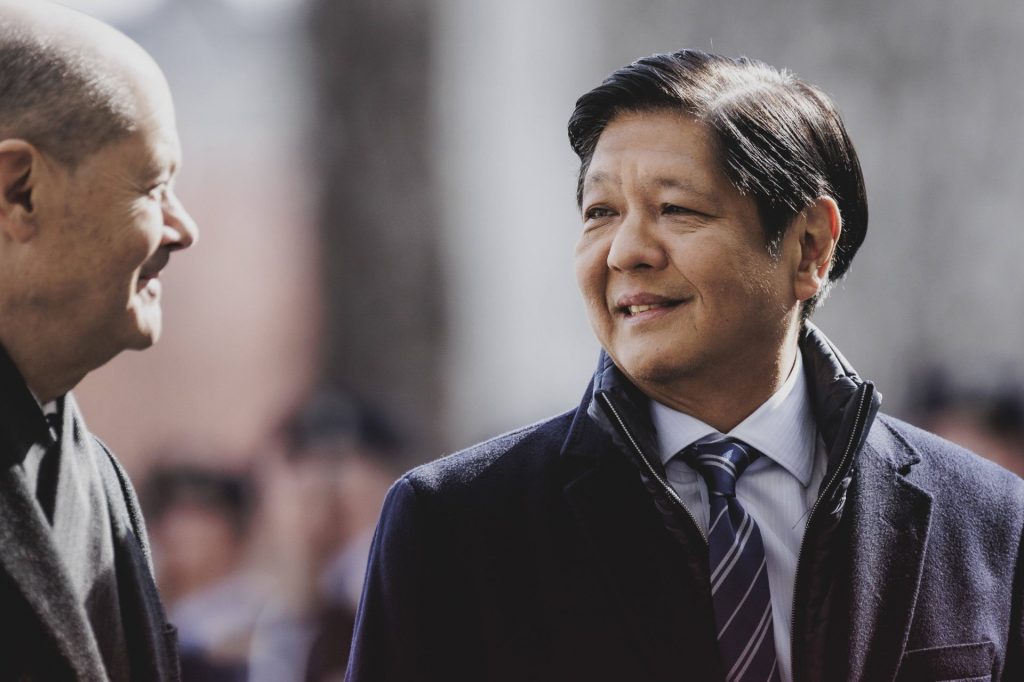
A glance at Olaf Scholz’s calendar shows: The German Chancellor is getting serious about Germany’s China strategy. At the start of this week, Scholz first met Malaysia’s Prime Minister Anwar Ibrahim, followed by Philippine President Ferdinand Marcos Jr. on Tuesday – and Thailand’s Prime Minister Srettha Thavisin is expected in Berlin today.
The Chancellor’s Office commented on this: The aim is to underpin the diversification and de-risking approach of the German China strategy with more substance. Page 35 of the country’s “Strategy on China” states: “Our prosperity depends to a great extent on functioning global supply and value chains. We want to safeguard these for the long term, in particular by spreading risks more widely.” Translated into Olaf Scholz’s schedule, this means speed dating with Southeast Asia.
These are talks with partners that can be difficult at times when it comes to human rights, climate change and the war on drugs. But it is about the big picture: New supply chains and raw material suppliers are needed to reduce one-sided dependencies on China. To this end, Germany wants to expand its relations with emerging ASEAN nations.
Initial successes have already been achieved with Malaysia in particular. According to the Chancellery, Malaysia is “our second most important supplier of semiconductors after Taiwan. “The announced Infineon investment in Malaysia is a good example of the diversification of our partnerships.”
According to the German Foreign Office, around 700 German companies are represented in Malaysia. The country is Germany’s leading trading partner of all ASEAN countries. The bilateral trade volume was just under 19 billion euros in 2022. In addition, many German companies use the country as a regional hub – for Southeast Asia and beyond. At the press conference with Scholz, Anwar underlined his country’s role as an ASEAN hub for green technologies and welcomed Germany’s interest in new investments in this area, among others.
The talks with Philippine President Ferdinand Marcos Jr. also included security. Scholz compared the Ukraine war in Europe with the disputes in the South China Sea, saying that Germany rejects violent border changes. Accordingly, Germany will work more closely with the Philippines in the maritime sector. Marcos welcomed Germany’s efforts on Tuesday.
Tensions between Manila and Beijing in the South China Sea have increased dramatically recently, and China’s neighbors are massively building up their military capabilities. The region is one of the most geostrategically important in the world: Roughly a third of all global trade passes through these waters, and the area is also rich in raw materials.
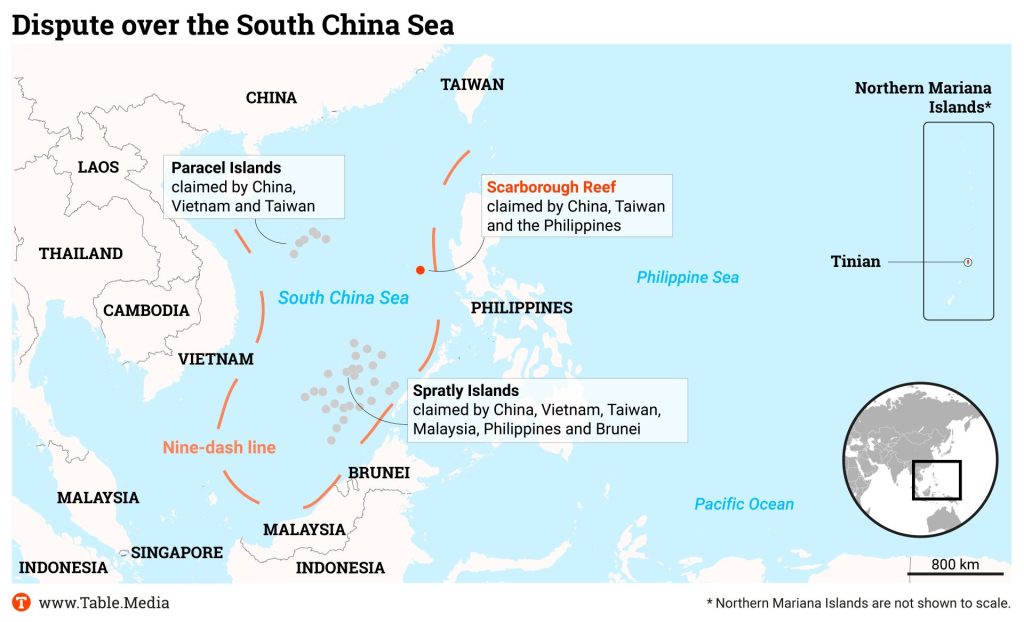
Whoever has control here is in an extremely powerful position. Because they are part of the first island chain and in proximity to Taiwan, the Philippines are strategically extremely important. On Tuesday in Berlin, Scholz once again emphasized Germany’s support for the Philippines in maintaining the rules-based order in the South China Sea.
Germany’s search for partners is by no means limited to Scholz’s speed dating this week: In late 2022, Scholz had already campaigned for more economic exchange in Vietnam and Singapore. At the end of January 2024, German President Frank-Walter Steinmeier praised Vietnam and its neighbor Thailand as “partners” who shared “common interests” with Germany. “It’s worth looking here,” Steinmeier proclaimed. When the German President traveled to Mongolia in February, Berlin, and Ulaanbaatar even signed a strategic partnership agreement.
And Foreign Minister Annalena Baerbock is also busy diversifying. In January, Baerbock visited the Philippine Coast Guard and received a demonstration of surveillance drones, which Germany is providing as part of an armament initiative. Ostensibly, the aim is to secure the trade routes through the South China Sea, but it also sends a clear signal to China.
The political contacts go hand in hand with economic progress. In the first half of 2023, Germany exported goods worth 16 billion US dollars (14.7 billion euros) to the ten countries of the Southeast Asian confederation ASEAN. This is an increase of 8.5 percent – and the highest figure since 2018. According to the German government’s foreign trade agency GTAI, this compensated for part of the decline in German exports to China.
However, China should not be underestimated. The People’s Republic has long since become the trading hub for the region: China is the main supplier of goods in every ASEAN state, usually far ahead of the competition.
And China remains Germany’s biggest trading partner. In 2022, German trade with China reached a new record, with imports and exports totaling 299 billion euros. One year later – when the diversification target of the China strategy was already in place – it was still 253 billion euros.
It should be clear to everyone in Berlin: Despite all the warm words and the red carpet, the many Southeast Asian countries cannot simply replace China as a partner and sales market. However, Germany is not interested in decoupling from China anyway but rather in “reducing dependencies in critical areas.” And that is another thing that Olaf Scholz’s calendar shows: The Chancellor plans to travel to China on 15 and 16 April. Scholz last made a short visit to China in early November 2022.
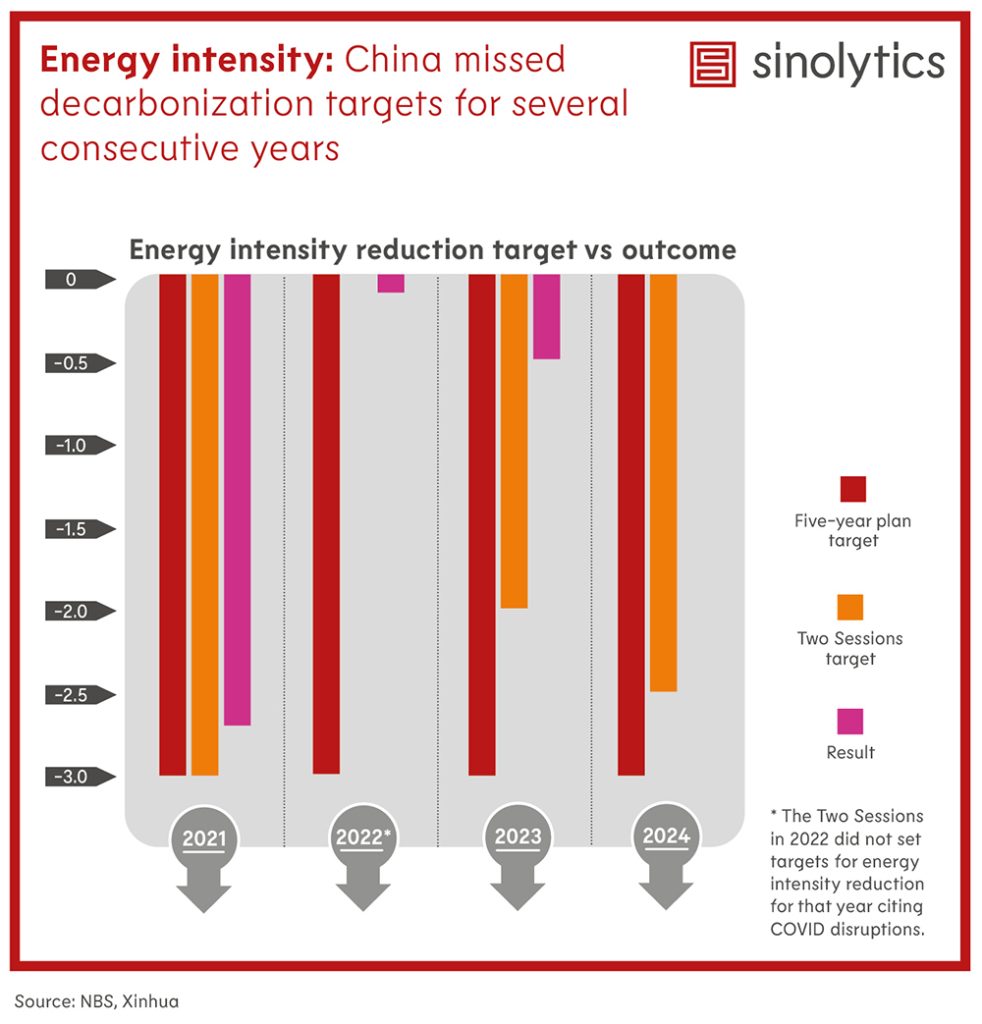
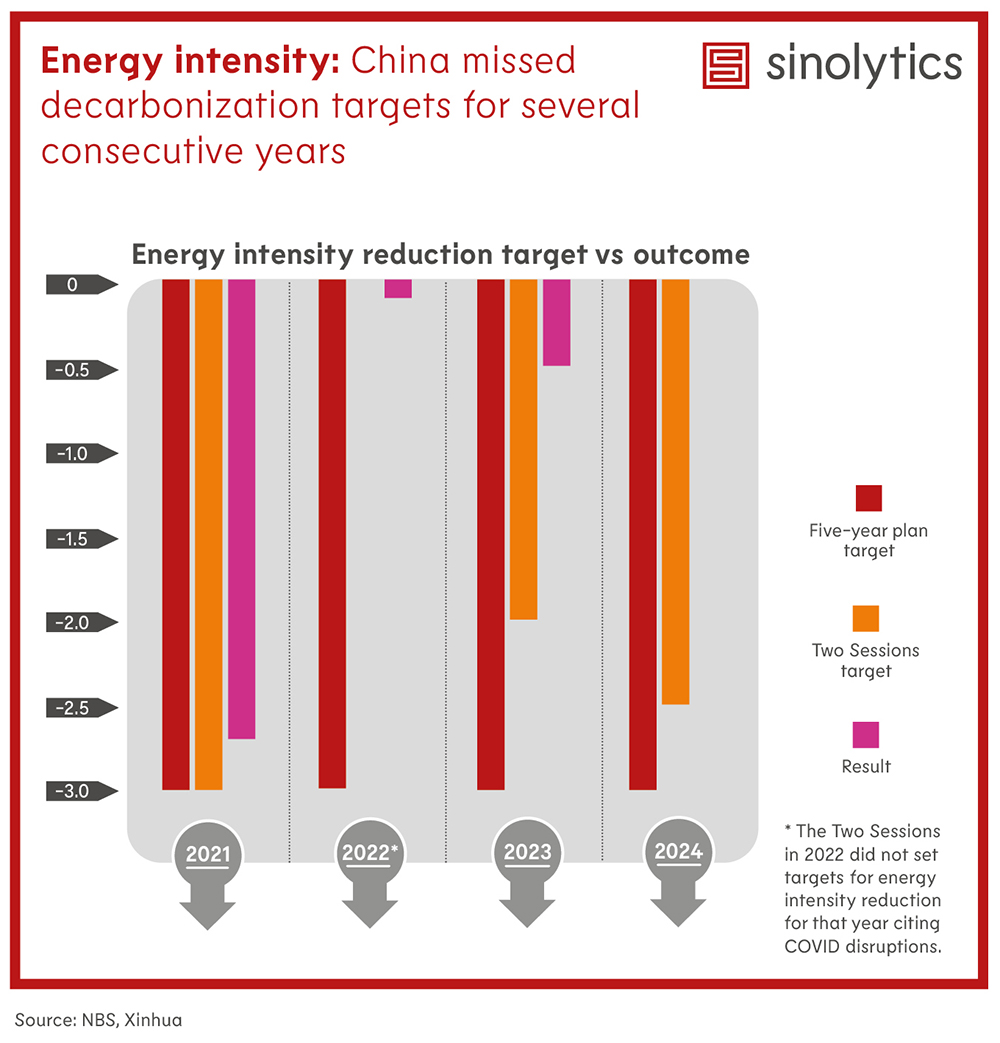
Sinolytics is a research-based business consultancy entirely focused on China. It advises European companies on their strategic orientation and specific business activities in the People’s Republic.
Volkswagen is topping up its investments in China. The German company and its partner JAC Motors have jointly injected the equivalent of almost 1.8 billion euros in additional capital into their joint venture specializing in electric cars called Volkswagen Anhui, located in the eponymous province. Since 2020, VW has held 75 percent of the shares in the joint venture, founded in 2017, and both invested corresponding to their shares. This means that the shareholding ratio in the joint venture remained unchanged, as detailed in a stock exchange release issued by JAC Motors on Tuesday.
VW and JAC Motors founded the EV joint venture in 2017, and initially, each held half of the shares. In December 2020, VW increased its stake to 75 percent. The joint venture’s plant has been manufacturing the Cupra Tavascan model for export markets since the beginning of the year. Volkswagen Anhui is the Wolfsburg-based company’s only joint venture exclusively for developing and producing electric cars.
Volkswagen also cooperates with Xpeng and the state-owned companies SAIC and FAW in China. The company has recently come under criticism over a plant in the Uyghur region of Xinjiang, which VW operates jointly with SAIC. Following allegations of forced labor, there have been indications that the company may withdraw from the plant; VW recently stated it was closely examining various scenarios. rtr
Xiaomi plans to launch its first electric cars by the end of March. The electric sedan SU7 will be available starting March 28, the head of the electronics company Lei Jun announced on Weibo and X on Tuesday. The EV division Xiaomi Automobile publicly unveiled the car in Beijing in late December and will roll off the production line at the state-owned company Beijing Automotive (BAIC).
The batteries are supplied by the Chinese car and battery manufacturer BYD and the Chinese battery specialist CATL. Investors welcomed the news: Xiaomi’s share price on the Hong Kong stock exchange jumped by about ten percent on Tuesday. Xiaomi founder Lei plans to become one of the fifth-largest EV manufacturers in the world over the next 10 to 20 years.
Over the weekend, news also emerged that Xiaomi Automobile will form a battery manufacturing joint venture with CATL and BAIC’s electrical division BAIC Blue Park (formerly BJEV). With a planned registered capital of one billion yuan (127 million euros), the joint venture will develop, produce and sell power and energy storage batteries. CATL will hold 51 percent, Beijing Blue Park 39 percent, Xiaomi Auto and the electricity service provider Beijing Energy will hold five percent each.
According to BAIC Blue Park, the joint venture will invest in the construction of a plant for intelligent battery cells in Beijing. Beijing authorities had already announced the construction of a CATL battery factory in the capital in January. ck
European politicians are discussing higher tariffs for Chinese electric cars. Mercedes-Benz CEO Ola Kallenius is calling for the exact opposite. In an interview with the Financial Times, Kallenius called on the EU Commission to lower the current tariffs on imported EVs from China. The EU currently imposes a ten percent tariff on imports of Chinese EVs. Chinese companies looking to export to Europe was a “natural progression of competition and it needs to be met with better product, better technology, more agility,” Kallenius said, adding that protectionism is “going the wrong way.”
In doing so, the Mercedes CEO is also positioning himself against his competitors from the volume segment: Car manufacturers such as Stellantis and Renault are calling for punitive tariffs against Chinese EVs. The China business of both companies is significantly lower than that of German car brands, which are more critical of punitive tariffs. The EU Commission is currently examining whether China’s subsidies for the electric sector would justify punitive tariffs. China also imposes tariffs of 15 percent on imported cars from Europe. ck
According to the Wall Street Journal citing people familiar with the matter, Taiwan’s Vice President-designate Hsiao Bi-khim traveled to Washington this week for a discreet visit. Concerned about China’s reaction, which considers Taiwan a breakaway province, Washington and Taipei officials tried to keep Hsiao’s visit secret, they added.
Hsiao served as Taipei’s representative in the US from mid-2020 until the end of last year. It was reported that she had traveled to the US capital on a private trip – to pack things that she had left behind when she campaigned with now President-elect Lai Ching-te. However, she was also planning to meet with US officials.
Hsiao, who will be sworn in along with Lai in late May, plans to discuss the future government’s agenda in Taipei with members of US President Joe Biden’s administration, according to Wall Street Journal sources. After her visit to Washington, Hsiao plans to visit several European capitals – also on private business. The Taiwanese Foreign Ministry and the ruling party DPP both emphasized that they could not disclose any details as Hsiao was traveling privately. cyb
China has started testing an AI chatbot for brain surgeons in hospitals. As Bloomberg reports, the Hong Kong-based Center for Artificial Intelligence and Robotics, an institution of the Chinese Academy of Sciences, has unveiled the AI bot called CARES Copilot 1.0. It is based on the open-source language model Llama 2.0 by the US company Meta Platforms. Researchers have trained and fine-tuned CARES Copilot 1.0 using newspapers, medical journals and manuals so that it can act as a kind of surgical advisor. Seven hospitals in Beijing and other cities will be testing the bot in the coming months.
According to the report, the Center for Artificial Intelligence and Robotics used around 100 graphics processors to train the AI bot. They equally used high-end A100 chips from the US company Nvidia and Huawei‘s Ascend 910B. The researchers hope that the bot will be able to answer questions with citations from more than a million academic records. It is also expected to be able to process diagnostic data such as MRI, ultrasound, or CT scans, as well as images, text, and audio. In the long term, CARES Copilot 1.0 could even take on a more active role, for example, it could warn doctors about risky procedures.
Beijing promotes the development of AI nationwide. President and Party leader Xi Jinping emphasized the high priority of new technologies at several meetings during the National People’s Congress, which ended on Monday. ck
Holger Schmidt has been Head of Business Support & Projects Lead – WX Key Markets for North America and China at Sanofi since the beginning of February. He was previously Business Excellence Manager & PMO – FM Europe, also for the French pharmaceutical group.
Adrian de Riz is the new Global Strategy Director at Royma Tech Precision Suzhou. Until the end of February, he was the General Manager for Europe for the same company. He will be based in London.
Is something changing in your organization? Let us know at heads@table.media!
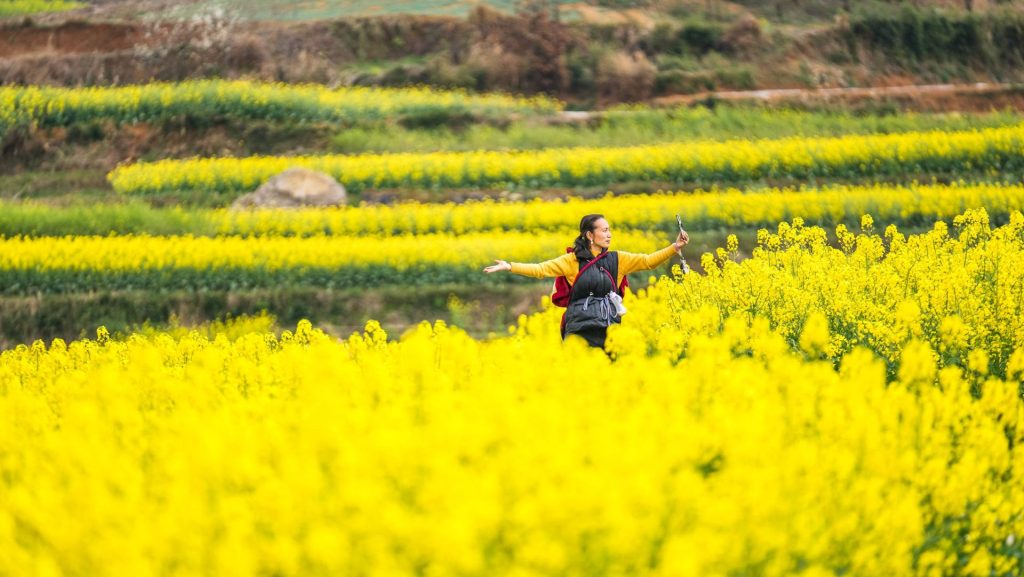
The rapeseed blossom has started in southern China – as always, a few weeks earlier than in Europe. The vibrant yellow is gorgeous and perfect for photos and selfies. And so, every year, vacationers make their way to the country’s rapeseed regions. For example, the rapeseed fields around the village of Wayao in the Liupanshui region of the southwestern Chinese province of Guizhou.
China’s rise to become the most influential power on the African continent was long considered unstoppable. The People’s Republic invested and traded with the countries of Africa. But now, the African Union (AU) is rebelling against the People’s Republic – it has banned the donkey skin trade. Their export had recently increased sharply. As Fabian Peltsch writes, the skin of the hard-to-breed donkeys, which are of enormous value to local agriculture, is used to produce a coveted remedy in traditional Chinese medicine. The all-purpose product called Ejiao has been booming as China’s prosperity grows.
But this trade resulted in a dramatically reduced donkey population in Africa, and poorer farmers, in particular, no longer have enough of these resilient animals. It remains to be seen whether the AU’s continent-wide ban can help save the donkey population: After all, each state still has to incorporate it into national law. And the black market is flourishing. In any case, it is a textbook example of how a lack of sensitivity to local conditions can lead to problems.
Germany does not want to make the same mistake in its relations with Southeast Asia, so Chancellor Olaf Scholz welcomed Prime Minister Anwar Ibrahim, who had arrived from Malaysia despite the start of Ramadan. It is ASEAN Week in Berlin, as Michael Radunski analyzes. Scholz is meeting the heads of government of Malaysia, the Philippines, and Thailand this Wednesday. The topic is always identical: New market opportunities for German companies as part of the country’s de-risking efforts.


The donkey has become a kind of elephant in the room for Sino-African relations. These farm animals are mass slaughtered in Africa and then processed into ejiao 阿胶 in China, a popular universal remedy in Chinese medicine (TCM) believed to be effective against a variety of ailments such as respiratory and circulatory diseases, as well as signs of aging and pregnancy problems.
Given the wide range of applications, it is hard to prove the medicinal effect of this gelatin made mainly from the skin of this animal. However, as its use can be traced back to texts from the Han Dynasty (206 BC to 220 AD), it is considered a cultural heritage in China and is marketed by companies such as Dong’e Ejiao from Shandong as the medicine of empresses and emperors.
Since the 1950s, this “donkey glue” has been processed industrially in China. Around 15,288 tons of ejiao were produced in the People’s Republic in 2020 alone. This meant that four to six million donkeys had to be slaughtered. According to estimates by the non-profit organization Donkey Sanctuary, that is around 10 percent of the global donkey population.
As donkeys are difficult to breed and only give birth every few years, China has long relied on foreign sources to satisfy its hunger for ejiao. For years, these have primarily been found in Africa. According to the United Nations and the animal welfare organization Brooke, Africa is home to 60 percent of the global donkey population. However, in some cases, Chinese demand has reduced the donkey populations in countries such as Kenya, Botswana, Ethiopia and Burkina Faso by half.
In February, this led the African Union (AU), an alliance of 55 countries, to impose a continent-wide ban on donkey hide exports. Some African countries, such as Ethiopia, the Ivory Coast, and Tanzania, have already responded to the dwindling number of these important pack animals with nationwide bans.
It remains to be seen whether the AU’s continent-wide ban can help save the donkey population: African states must each implement the ban through national laws, a process that could take years. For example, Kenya banned the trade in February 2020 but lifted it again in May 2021 after a series of legal disputes with the industry. Today, Nairobi is home to one of the world’s largest donkey slaughterhouses. Its Chinese operators emphasize that animal welfare standards are respected and that the donkey population in the country remains in balance.
Donkeys, which are robust even in tropical climates, are mainly used in Kenya, Botswana, Ethiopia and Burkina Faso for agriculture and as transport animals. Small farmers can transport more goods to the markets using a donkey. A study conducted in Ghana found that a donkey saves around five hours of labor per week for adults and ten hours per week for children. Time that would otherwise be lost for learning and attending school. This is to the detriment of women and girls, in particular, who are already disadvantaged as it is. Ironic, considering that the Chinese consumers of ejiao are mainly wealthier women.
In countries such as Ethiopia, donkeys are also seen as companions. The treatment and slaughter of these animals to produce a consumer product have caused considerable damage to China’s reputation in Africa. When talking to Kenyans about Chinese activities in their country, for example, the topic not only focuses on major infrastructure projects but also quickly turns to donkeys, often with a bitter or even hostile undertone. Whenever donkeys disappear from rural areas, Chinese guest workers are often suspected.
Loose borders and lax enforcement of penalties also complicate efforts to curb trafficking. The black market is flourishing. Donkeys are frequently stolen, robbing families of their livelihoods. Donkey Sanctuary estimates that between 25 and 35 percent of the approximately three million donkey skins imported by China each year come from stolen donkeys.
The ejiao industry trade undermines Sino-African relations and is in direct contradiction to Chinese initiatives such as the China-Africa Poverty Reduction and Development Partnership Alliance to promote rural communities, Lauren Johnston, China-Africa expert and associate professor at the University of Sydney, told Table.Briefings.
“The Chinese want to help improve food security in Africa and boost agricultural trade, and then they undermine all that with this crazy donkey thing,” Johnston said in bewilderment. “It just creates the opposite of everything they claim to want to achieve in the partnership with Africa.” The scientist surmises that the companies and embassies probably believed the matter would resolve itself or die down.
So far, China has reportedly signed formal agreements on the import of donkey hides with 16 African countries, with the majority of exporting companies based in Nigeria and Kenya. However, according to Johnston, this is insufficient to tackle the problem. “The African Union’s move is primarily about the welfare of donkeys and not specifically about China, but it is implicitly the African Union’s first major collective slap in the face of the People’s Republic. I think this is another reason why the Chinese need to be rational now. They need to figure out how to rationally manage this industry and make it more sustainable – even if that means lower profits from this cash cow.” If the worst comes to the worst, ejiao will have to disappear from the mass market or be produced from other sources, says Johnston. “This should have happened ten years ago.”

A glance at Olaf Scholz’s calendar shows: The German Chancellor is getting serious about Germany’s China strategy. At the start of this week, Scholz first met Malaysia’s Prime Minister Anwar Ibrahim, followed by Philippine President Ferdinand Marcos Jr. on Tuesday – and Thailand’s Prime Minister Srettha Thavisin is expected in Berlin today.
The Chancellor’s Office commented on this: The aim is to underpin the diversification and de-risking approach of the German China strategy with more substance. Page 35 of the country’s “Strategy on China” states: “Our prosperity depends to a great extent on functioning global supply and value chains. We want to safeguard these for the long term, in particular by spreading risks more widely.” Translated into Olaf Scholz’s schedule, this means speed dating with Southeast Asia.
These are talks with partners that can be difficult at times when it comes to human rights, climate change and the war on drugs. But it is about the big picture: New supply chains and raw material suppliers are needed to reduce one-sided dependencies on China. To this end, Germany wants to expand its relations with emerging ASEAN nations.
Initial successes have already been achieved with Malaysia in particular. According to the Chancellery, Malaysia is “our second most important supplier of semiconductors after Taiwan. “The announced Infineon investment in Malaysia is a good example of the diversification of our partnerships.”
According to the German Foreign Office, around 700 German companies are represented in Malaysia. The country is Germany’s leading trading partner of all ASEAN countries. The bilateral trade volume was just under 19 billion euros in 2022. In addition, many German companies use the country as a regional hub – for Southeast Asia and beyond. At the press conference with Scholz, Anwar underlined his country’s role as an ASEAN hub for green technologies and welcomed Germany’s interest in new investments in this area, among others.
The talks with Philippine President Ferdinand Marcos Jr. also included security. Scholz compared the Ukraine war in Europe with the disputes in the South China Sea, saying that Germany rejects violent border changes. Accordingly, Germany will work more closely with the Philippines in the maritime sector. Marcos welcomed Germany’s efforts on Tuesday.
Tensions between Manila and Beijing in the South China Sea have increased dramatically recently, and China’s neighbors are massively building up their military capabilities. The region is one of the most geostrategically important in the world: Roughly a third of all global trade passes through these waters, and the area is also rich in raw materials.

Whoever has control here is in an extremely powerful position. Because they are part of the first island chain and in proximity to Taiwan, the Philippines are strategically extremely important. On Tuesday in Berlin, Scholz once again emphasized Germany’s support for the Philippines in maintaining the rules-based order in the South China Sea.
Germany’s search for partners is by no means limited to Scholz’s speed dating this week: In late 2022, Scholz had already campaigned for more economic exchange in Vietnam and Singapore. At the end of January 2024, German President Frank-Walter Steinmeier praised Vietnam and its neighbor Thailand as “partners” who shared “common interests” with Germany. “It’s worth looking here,” Steinmeier proclaimed. When the German President traveled to Mongolia in February, Berlin, and Ulaanbaatar even signed a strategic partnership agreement.
And Foreign Minister Annalena Baerbock is also busy diversifying. In January, Baerbock visited the Philippine Coast Guard and received a demonstration of surveillance drones, which Germany is providing as part of an armament initiative. Ostensibly, the aim is to secure the trade routes through the South China Sea, but it also sends a clear signal to China.
The political contacts go hand in hand with economic progress. In the first half of 2023, Germany exported goods worth 16 billion US dollars (14.7 billion euros) to the ten countries of the Southeast Asian confederation ASEAN. This is an increase of 8.5 percent – and the highest figure since 2018. According to the German government’s foreign trade agency GTAI, this compensated for part of the decline in German exports to China.
However, China should not be underestimated. The People’s Republic has long since become the trading hub for the region: China is the main supplier of goods in every ASEAN state, usually far ahead of the competition.
And China remains Germany’s biggest trading partner. In 2022, German trade with China reached a new record, with imports and exports totaling 299 billion euros. One year later – when the diversification target of the China strategy was already in place – it was still 253 billion euros.
It should be clear to everyone in Berlin: Despite all the warm words and the red carpet, the many Southeast Asian countries cannot simply replace China as a partner and sales market. However, Germany is not interested in decoupling from China anyway but rather in “reducing dependencies in critical areas.” And that is another thing that Olaf Scholz’s calendar shows: The Chancellor plans to travel to China on 15 and 16 April. Scholz last made a short visit to China in early November 2022.


Sinolytics is a research-based business consultancy entirely focused on China. It advises European companies on their strategic orientation and specific business activities in the People’s Republic.
Volkswagen is topping up its investments in China. The German company and its partner JAC Motors have jointly injected the equivalent of almost 1.8 billion euros in additional capital into their joint venture specializing in electric cars called Volkswagen Anhui, located in the eponymous province. Since 2020, VW has held 75 percent of the shares in the joint venture, founded in 2017, and both invested corresponding to their shares. This means that the shareholding ratio in the joint venture remained unchanged, as detailed in a stock exchange release issued by JAC Motors on Tuesday.
VW and JAC Motors founded the EV joint venture in 2017, and initially, each held half of the shares. In December 2020, VW increased its stake to 75 percent. The joint venture’s plant has been manufacturing the Cupra Tavascan model for export markets since the beginning of the year. Volkswagen Anhui is the Wolfsburg-based company’s only joint venture exclusively for developing and producing electric cars.
Volkswagen also cooperates with Xpeng and the state-owned companies SAIC and FAW in China. The company has recently come under criticism over a plant in the Uyghur region of Xinjiang, which VW operates jointly with SAIC. Following allegations of forced labor, there have been indications that the company may withdraw from the plant; VW recently stated it was closely examining various scenarios. rtr
Xiaomi plans to launch its first electric cars by the end of March. The electric sedan SU7 will be available starting March 28, the head of the electronics company Lei Jun announced on Weibo and X on Tuesday. The EV division Xiaomi Automobile publicly unveiled the car in Beijing in late December and will roll off the production line at the state-owned company Beijing Automotive (BAIC).
The batteries are supplied by the Chinese car and battery manufacturer BYD and the Chinese battery specialist CATL. Investors welcomed the news: Xiaomi’s share price on the Hong Kong stock exchange jumped by about ten percent on Tuesday. Xiaomi founder Lei plans to become one of the fifth-largest EV manufacturers in the world over the next 10 to 20 years.
Over the weekend, news also emerged that Xiaomi Automobile will form a battery manufacturing joint venture with CATL and BAIC’s electrical division BAIC Blue Park (formerly BJEV). With a planned registered capital of one billion yuan (127 million euros), the joint venture will develop, produce and sell power and energy storage batteries. CATL will hold 51 percent, Beijing Blue Park 39 percent, Xiaomi Auto and the electricity service provider Beijing Energy will hold five percent each.
According to BAIC Blue Park, the joint venture will invest in the construction of a plant for intelligent battery cells in Beijing. Beijing authorities had already announced the construction of a CATL battery factory in the capital in January. ck
European politicians are discussing higher tariffs for Chinese electric cars. Mercedes-Benz CEO Ola Kallenius is calling for the exact opposite. In an interview with the Financial Times, Kallenius called on the EU Commission to lower the current tariffs on imported EVs from China. The EU currently imposes a ten percent tariff on imports of Chinese EVs. Chinese companies looking to export to Europe was a “natural progression of competition and it needs to be met with better product, better technology, more agility,” Kallenius said, adding that protectionism is “going the wrong way.”
In doing so, the Mercedes CEO is also positioning himself against his competitors from the volume segment: Car manufacturers such as Stellantis and Renault are calling for punitive tariffs against Chinese EVs. The China business of both companies is significantly lower than that of German car brands, which are more critical of punitive tariffs. The EU Commission is currently examining whether China’s subsidies for the electric sector would justify punitive tariffs. China also imposes tariffs of 15 percent on imported cars from Europe. ck
According to the Wall Street Journal citing people familiar with the matter, Taiwan’s Vice President-designate Hsiao Bi-khim traveled to Washington this week for a discreet visit. Concerned about China’s reaction, which considers Taiwan a breakaway province, Washington and Taipei officials tried to keep Hsiao’s visit secret, they added.
Hsiao served as Taipei’s representative in the US from mid-2020 until the end of last year. It was reported that she had traveled to the US capital on a private trip – to pack things that she had left behind when she campaigned with now President-elect Lai Ching-te. However, she was also planning to meet with US officials.
Hsiao, who will be sworn in along with Lai in late May, plans to discuss the future government’s agenda in Taipei with members of US President Joe Biden’s administration, according to Wall Street Journal sources. After her visit to Washington, Hsiao plans to visit several European capitals – also on private business. The Taiwanese Foreign Ministry and the ruling party DPP both emphasized that they could not disclose any details as Hsiao was traveling privately. cyb
China has started testing an AI chatbot for brain surgeons in hospitals. As Bloomberg reports, the Hong Kong-based Center for Artificial Intelligence and Robotics, an institution of the Chinese Academy of Sciences, has unveiled the AI bot called CARES Copilot 1.0. It is based on the open-source language model Llama 2.0 by the US company Meta Platforms. Researchers have trained and fine-tuned CARES Copilot 1.0 using newspapers, medical journals and manuals so that it can act as a kind of surgical advisor. Seven hospitals in Beijing and other cities will be testing the bot in the coming months.
According to the report, the Center for Artificial Intelligence and Robotics used around 100 graphics processors to train the AI bot. They equally used high-end A100 chips from the US company Nvidia and Huawei‘s Ascend 910B. The researchers hope that the bot will be able to answer questions with citations from more than a million academic records. It is also expected to be able to process diagnostic data such as MRI, ultrasound, or CT scans, as well as images, text, and audio. In the long term, CARES Copilot 1.0 could even take on a more active role, for example, it could warn doctors about risky procedures.
Beijing promotes the development of AI nationwide. President and Party leader Xi Jinping emphasized the high priority of new technologies at several meetings during the National People’s Congress, which ended on Monday. ck
Holger Schmidt has been Head of Business Support & Projects Lead – WX Key Markets for North America and China at Sanofi since the beginning of February. He was previously Business Excellence Manager & PMO – FM Europe, also for the French pharmaceutical group.
Adrian de Riz is the new Global Strategy Director at Royma Tech Precision Suzhou. Until the end of February, he was the General Manager for Europe for the same company. He will be based in London.
Is something changing in your organization? Let us know at heads@table.media!

The rapeseed blossom has started in southern China – as always, a few weeks earlier than in Europe. The vibrant yellow is gorgeous and perfect for photos and selfies. And so, every year, vacationers make their way to the country’s rapeseed regions. For example, the rapeseed fields around the village of Wayao in the Liupanshui region of the southwestern Chinese province of Guizhou.
